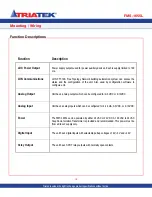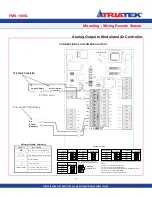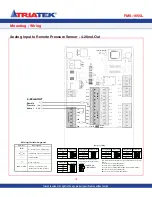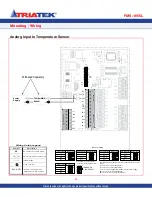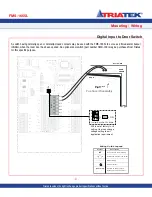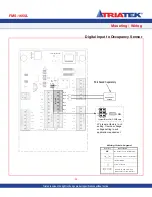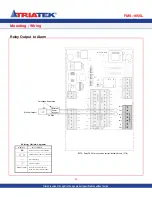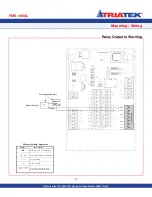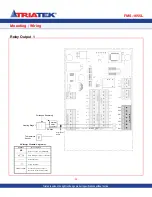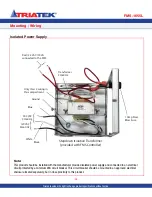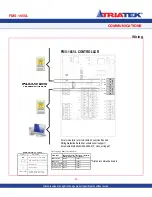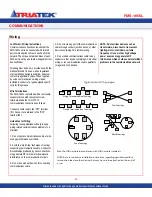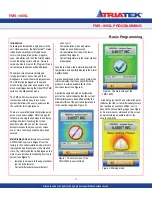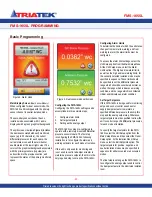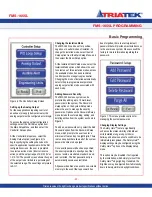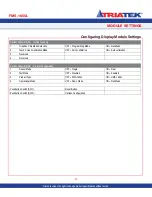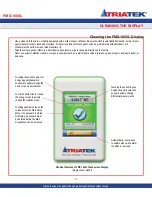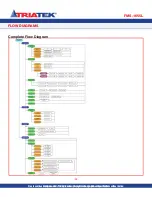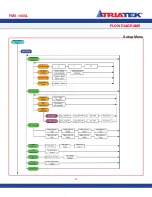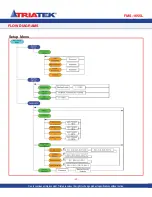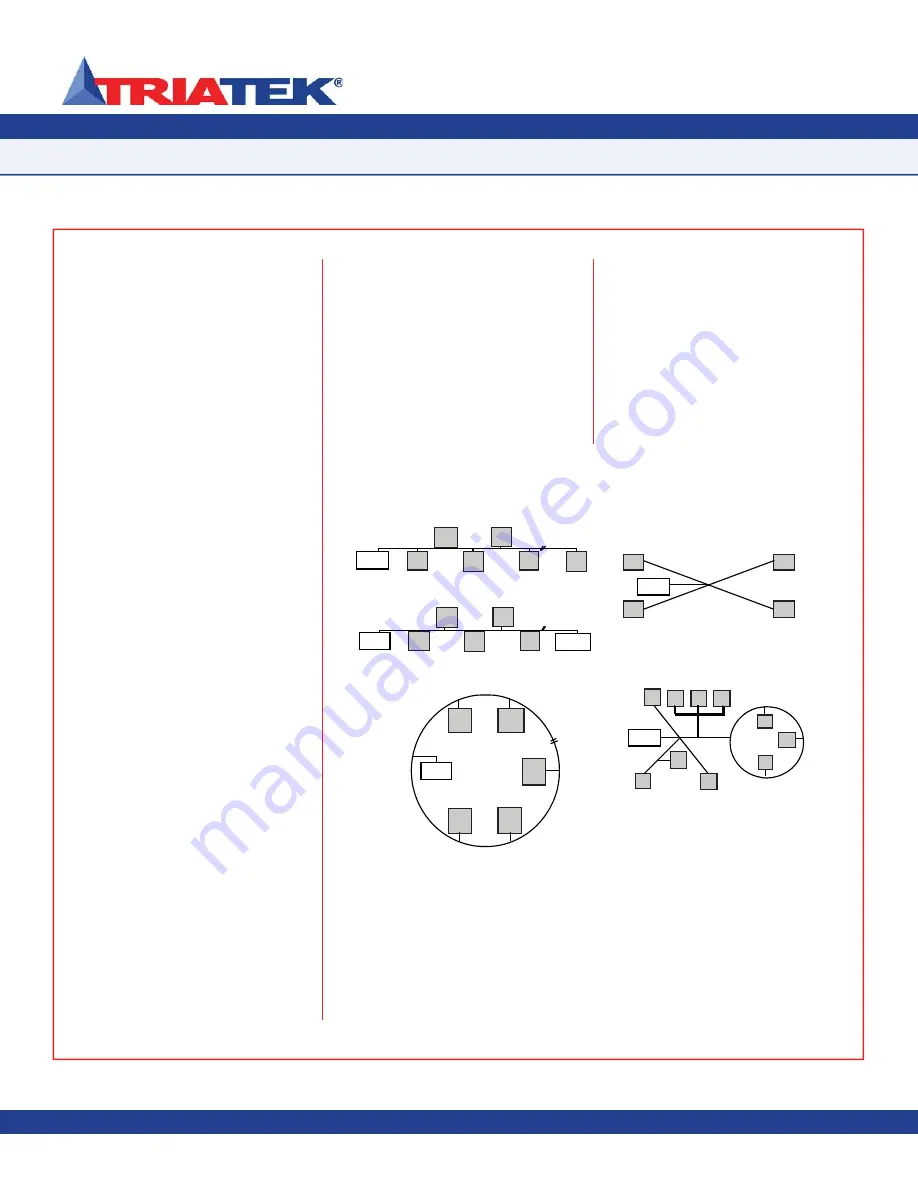
Due to continuous improvement, Triatek reserves the right to change product specifications without notice.
COMMUNICATIONS
FMS-1655L
Due to continuous improvement, Triatek reserves the right to change product specifications without notice.
-
30
-
Triatek reserves the right to change product specifications without notice.
LonWorks
®
Wiring Instructions
Communication connections require that the
FMS-1655L units be connected with twisted
pair communication cables to each unit in the
network. The unique network address of each
FMS unit is set by a network management tool
like LonMaker.
All wiring must be done in accordance with the
National Electric Code as well as regulations
of all authorities having jurisdiction, and must
conform to applicable codes. When required
by code, communications wiring may be
installed in conduit of a type designed specifi-
cally for this purpose.
Wire Terminations
The FMS-1655L is provided with a removable
connector block with convenient screw
terminals. Make the LON FTT-10
communications connections as follows:
Connect a cable lead to the “NT1” terminal
(#1). Connect a cable lead to the “NT2”
terminal (#2).
Guidelines for Wiring
Following these guidelines will help to keep
wiring-related communications problems to a
minimum:
1. Do not splice communications cable or wire
at any point between controllers.
2. Avoid the “stub T-tap” technique of routing/
connecting communications cable. Conductor
discontinuities produced by such connections
may generate RFI or other electromagnetic
interference on the communications circuit.
3. Do not use wire nut devices for connecting
communications cable.
4. Do not route any part of the communications
cable through conduit, junction boxes, or other
devices containing AC electrical wiring.
5. Do not strap communications cable to any
conduit or other device containing AC electrical
wiring, or run communications cable parallel to
(or against) such devices.
NOTE: AC electrical devices such as
transformers, disconnects, fluorescent
lighting, motor-controllers, variable
frequency drives or other high voltage
power sources may generate RF
interference which could cause intermittent
problems in the communications network.
Wiring
Typical Netw ork Topologies
Singly Terminated Bus Topology
Doubly Terminated Bus Topology
Loop Topology
Star Topology
Mixed Topology
Termination
Termination
Termination
Termination
Termination
Termination
Wire the LON network in accordance with LON network standards.
NOTE: Be sure to observe installation instructions regarding possible need for a
termination load or other device that may have to be attached on the end of
a run.

